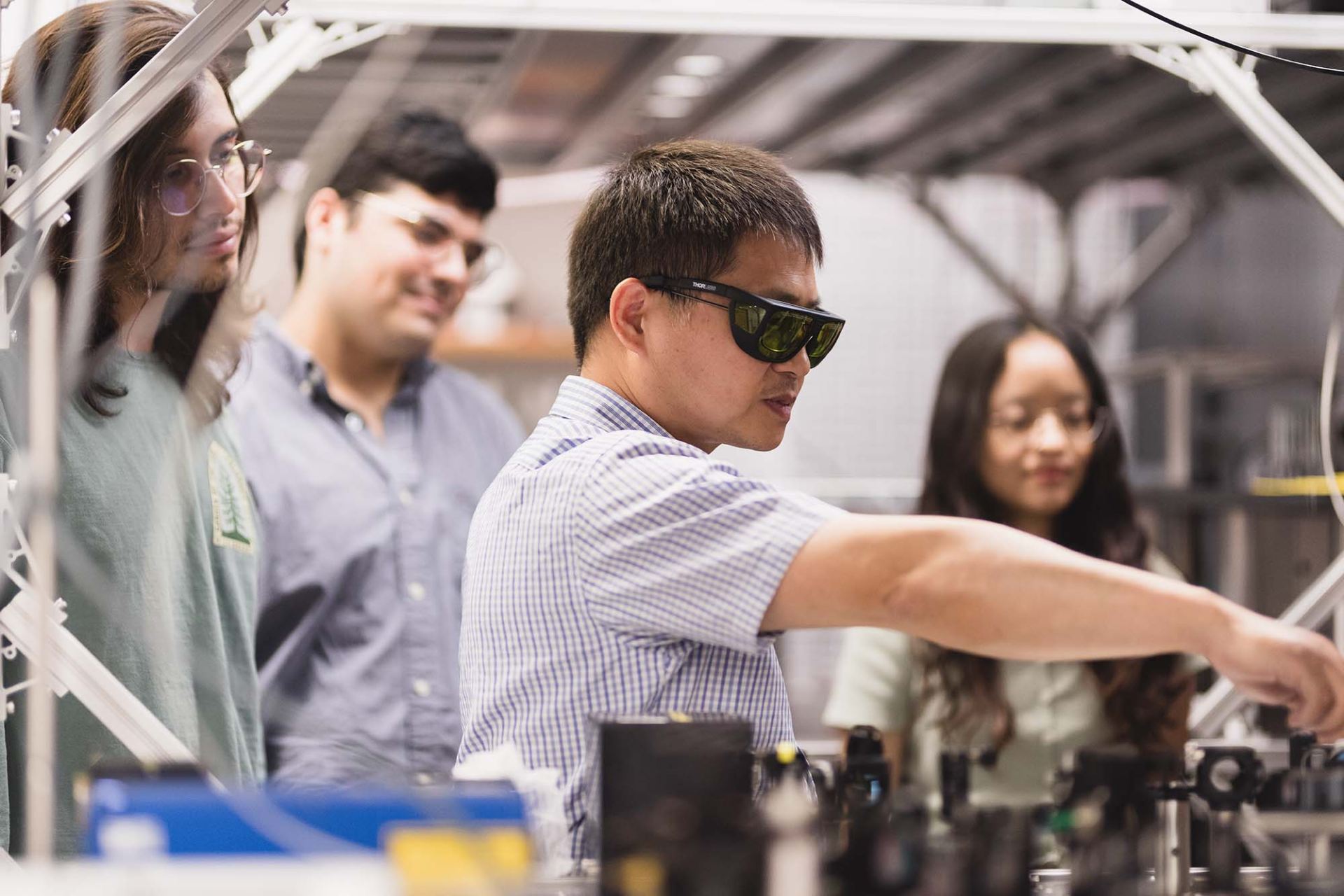
NSF Grant Advances Quantum Research, Education
The coldest place in North Texas — a physics lab at UT Dallas — is heating up, thanks to a five-year, $5 million grant from the National Science Foundation to advance the science and engineering — and train the workforce — needed to make neutral-atom based quantum information processing a reality.
In addition to basic research aimed at transitioning reliable quantum information technologies from theory to practice, the grant supports the development of a new undergraduate minor and a master’s degree in quantum information science and engineering (QISE), which would be the first such graduate degree offered in Texas.
“UT Dallas is the next emerging power in quantum information science,” said Dr. Chuanwei Zhang, professor of physics in the School of Natural Sciences and Mathematics who leads the effort as principal investigator. “Based on our existing strengths, we are building a robust QISE community to help meet the future needs of Texas and the country.”
Although they have yet to be realized commercially, large-scale quantum computation and communication devices are theorized to be able to store more information and solve certain problems much faster than current computers and networks.
Cold atoms have become one of the major platforms for quantum computing. In his laboratory, co-principal investigator Dr. Shengwang Du (pictured above), professor of physics and the Francis S. and Maurine G. Johnson Chair, uses lasers and magnetic fields to trap and cool atoms to extreme temperatures near absolute zero, a temperature colder than the coldest reaches of outer space.
– Amanda Siegfried


